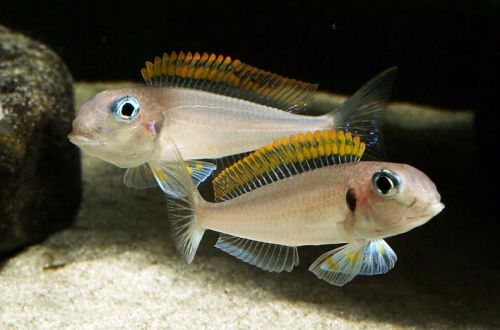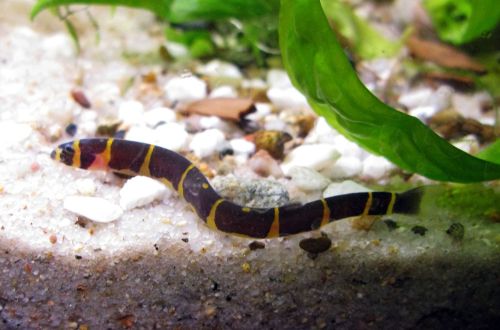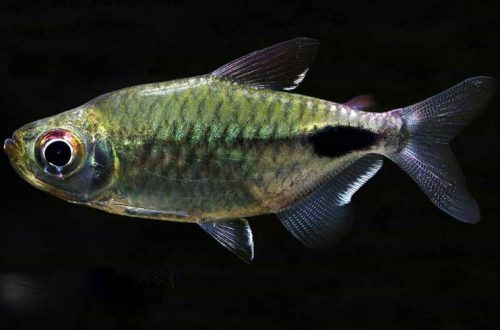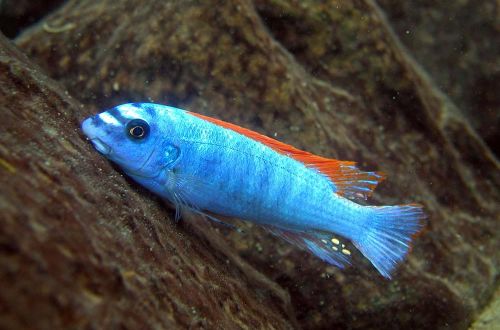
Labeotropheus
Labeotropheus vulgaris, scientific name Labeotropheus trewavasae, belongs to the Cichlidae family. Representative of the African cichlids of the Mbuna group is an aggressive territorial species, but at the same time a bright and beautiful fish, for which it is valued by many aquarists.

Like most African cichlids, this species is primarily suitable for a species biotope aquarium that mimics a specific habitat. The selection of neighbors is extremely limited, if not impossible at all in relatively small reservoirs.
Requirements and conditions:
- The volume of the aquarium – from 200 liters.
- Temperature – 23-28°C
- pH value – 7.0-8.0
- Water hardness – medium and high hardness (10–25 dH)
- Substrate type – sand or fine gravel with heaps of stones
- Lighting – moderate
- Brackish water – allowed at a concentration of 1,0002
- Water Movement – Moderate/Strong
- Size – up to 15 cm.
- Nutrition – vegetable food with meat / protein supplements
- life expectancy – up to 10 years.
Habitat
Endemic to Lake Malawi in Africa and not found anywhere else. It lives in the coastal rocky part between numerous stones, keeps in the upper layers of the water, where there are significant turbulent currents, which the fish successfully resists.
Description
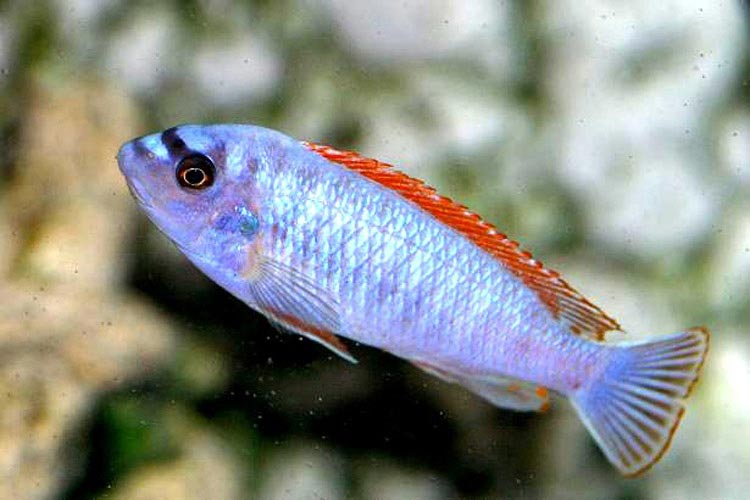
Labeotropheus has a large head with a slightly protruding mouth resembling a “humped” or “hooked” nose. Such a structure, together with sharp teeth, allows it to successfully scrape hard algae from the surfaces of stones and withstand strong water flows.
There are several color variations. The most popular form is blue or light blue with a bright orange or red dorsal fin. On the tail, as a rule, there is a fringing of a reddish color. Each male on the anal fin has a characteristic pattern of several yellow round spots.
Food
In the wild, fish eat algae growing on rocks, often along with those who live there – these are various small crustaceans. Therefore, the basis of the diet should be algae (about 95%) with some protein food (bloodworm, daphnia, brine shrimp). As a vegetable food, both specialized flakes, granules from pet stores, and home-made products are used: spinach pieces, broccoli, lettuce, etc. Feed 2-3 times a day in an amount that is eaten in 5 minutes.
Maintenance and care
For a small group of Labeotropheus, a tank from 200 liters is optimal, designed as a separate rocky section of the coast of Lake Malawi. It looks like this: a sandy substrate and a heap of large stones, pieces of rocks reaching the surface. They are located near one of the side walls of the aquarium or as a background. When creating a structure like this, be sure to use aquarium silicone glue to hold the stones together to prevent breakage. The fragments to be fastened must be large enough to form artificial crevices, grottoes, which will serve as an excellent shelter. There is no need for plants, they will be quickly destroyed.
The main chores will be the preparation of water. The lake is distinguished by the stability of the hydrochemical composition of the water (pH about 8.0, dH 10–25), which will need to be recreated in your aquarium. Read more about water parameters and ways to change them in the “Hydrochemical composition of water” section. In addition to a certain composition, it is also necessary to maintain a low level of pollution; this goal is served by weekly water renewal by 10–20% of the tank volume and cleaning of the soil from organic waste (excrement, uneaten food residues).
The minimum set of equipment includes filtration, lighting, heating and aeration systems. Moreover, each of them is of critical importance, therefore it is mandatory. It is worth noting that a high-performance filter system will increase the frequency of water changes up to two weeks, thereby facilitating the maintenance of the aquarium.
Behavior
Due to the aggressiveness towards relatives, especially between males, and the protection of their territory from other fish, keeping is possible only in the form of a harem – one male and three or four females. In large aquariums, it is allowed to combine several species of Mbuna, such as the Hummingbird Cichlid, provided that the male of each species has its own sufficient territory.
Breeding
Labeotropheus breeds successfully in captivity, spawning is fast and the aquarist can miss the moment and see the finished offspring. During the mating season, the male shows his best color, chooses and clears a place at the bottom – the future nest, usually it is a flat stone. Then he invites the female there, which lays up to 10 large eggs and quickly takes them into her mouth. Such behavior has developed evolutionarily in order to protect offspring from external threats and the inability to reliably hide eggs among open rocks.
The male is nearby during spawning and waves his anal fin with a pattern resembling eggs. The female mistakenly tries to pick them up by biting the fin, at which point the male releases milk and fertilization occurs.
The incubation period lasts about 3 weeks, all this time the eggs are in the female’s mouth. Juveniles at first stay close to the bottom, but soon begin to swim all over the aquarium. Feed crushed flakes with a high content of plant components. Fry are recommended to be transplanted into a separate tank.
Fish diseases
A typical disease of the representatives of Lake Malawi is the disease of the same name – “Bloating Malawi”. The main reason for this is the improper keeping of fish, this applies both to the parameters / purity of the water and to the quality of the feed. In favorable conditions, health problems do not arise. Read more about symptoms and treatments in the Aquarium Fish Diseases section.
Features
- Aggressive territorial view
- Keeping in a harem with one male and several females
- The diet consists mainly of plant foods



